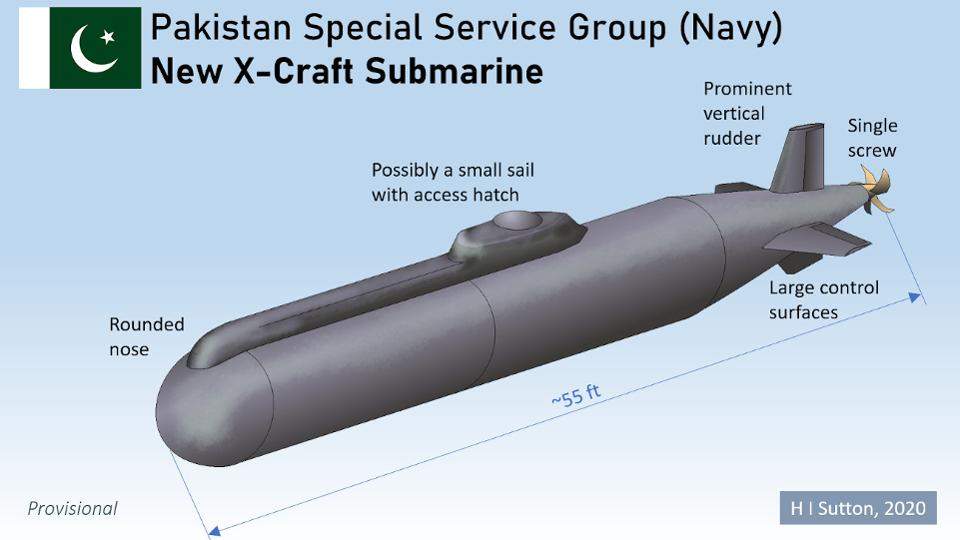Mystery Submarine In Service With Pakistan’s Navy SEALs

Some of the best-kept secrets are hidden in plain sight. Sitting on the quayside at PNS Iqbal, a special naval base in Karachi, Pakistan, is a submarine that you won’t find in any reference books, including my own World Submarines Covert Shores Recognition Guide. To my knowledge this will be the first article detailing this submarine, which appears to be in service with Pakistani Navy SEALs.
The submarine is a small special forces type, measuring around 55 feet long by 7 to 8 feet across. That is a fraction of the size of a regular submarine. Its location and size both point to use by the Pakistani Navy's Special Service Group, known as SSG (N). They are equivalent to the U.S. Navy SEALs and use the 'SEAL' terminology. They have a long tradition of training with the American unit.
This category of submarine is called an X-Craft in Pakistani Navy parlance. The term was inherited from the Italian manufacturer Cos.Mo.S (commonly written Cosmos) who sold Pakistan two sets of midget submarines in the past. The Italian firm itself borrowed the term from the Royal Navy midget submarines of World War II. The American equivalent to the X-Craft is the Dry Combat Submersible (DCS) now entering service with the U.S. Navy SEALs.
It may be intended to replace the Pakistani Navy's existing X-Craft. Pakistan operates three MG-110 X-Craft which were built locally between 1993 and 1996. They are getting long in the tooth and are due for replacement. But the Italian firm which designed them, Cos.Mo.S was closed down twenty years ago. Today its designs are continued by respected Italian manufacturer Drass. They offer a series of modern X-Craft that may be ideal for Pakistan.
But this mystery submarine does not appear to be a Drass design. The smallest publicly revealed Drass design is the DG-85, which is slightly larger than the boat seen in Pakistan.
One clue is that the boat first appeared in 2016. This may tie to a statement in the Pakistani Defence Production Division (MoDP) 2015-16 yearbook. It listed the "Indigenous design and construction of 01 Midget Submarine" as a target for 2016-2017.
Since then there have been reports that Turkish firm STM (Savunma Teknolojileri Mühendislik ve Ticaret A.Ş.) was jointly developing a mini-submarine with Pakistan. This could indicate that the mystery craft was not successful and so a new design is being developed. Another possibility is that the Turkish partnership will focus on smaller 'chariots.' These are similar to the U.S. Navy's SDVs (SEAL delivery vehicles). In the Pakistani Navy the Chariots can be carried by the larger X-Craft.
Analysis of commercial satellite imagery shows that the boat rarely (if ever) goes in the water. The only clear image showing it in the water is from 2016. The operational status is therefore unclear. The tent that covers it is often moved, however, suggesting ongoing maintenance. So the sub cannot be written off, but what it's called and what exactly it does remains a mystery.
Photo: Artist's impression of the new Pakistan Navy submarine. The image is based on analysis of satellite imagery. No photos are known to exist in the public domain.











